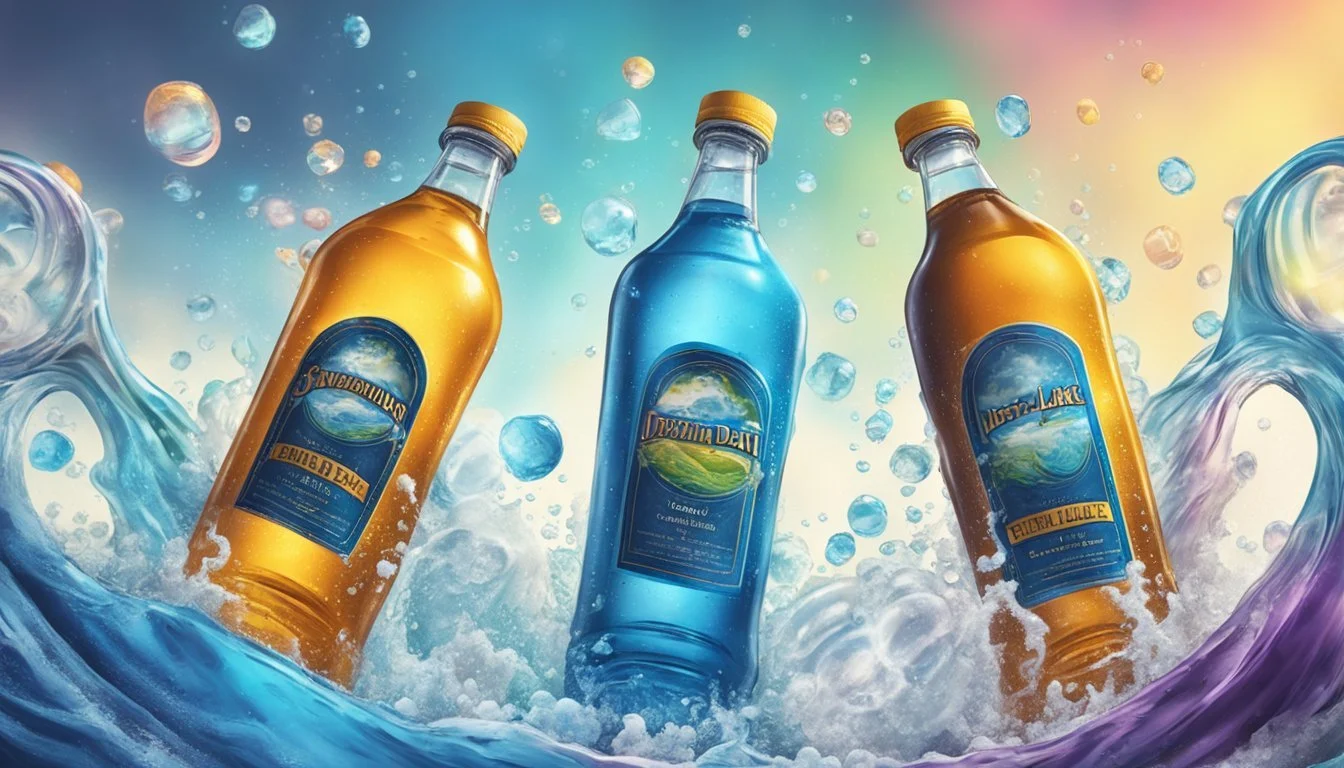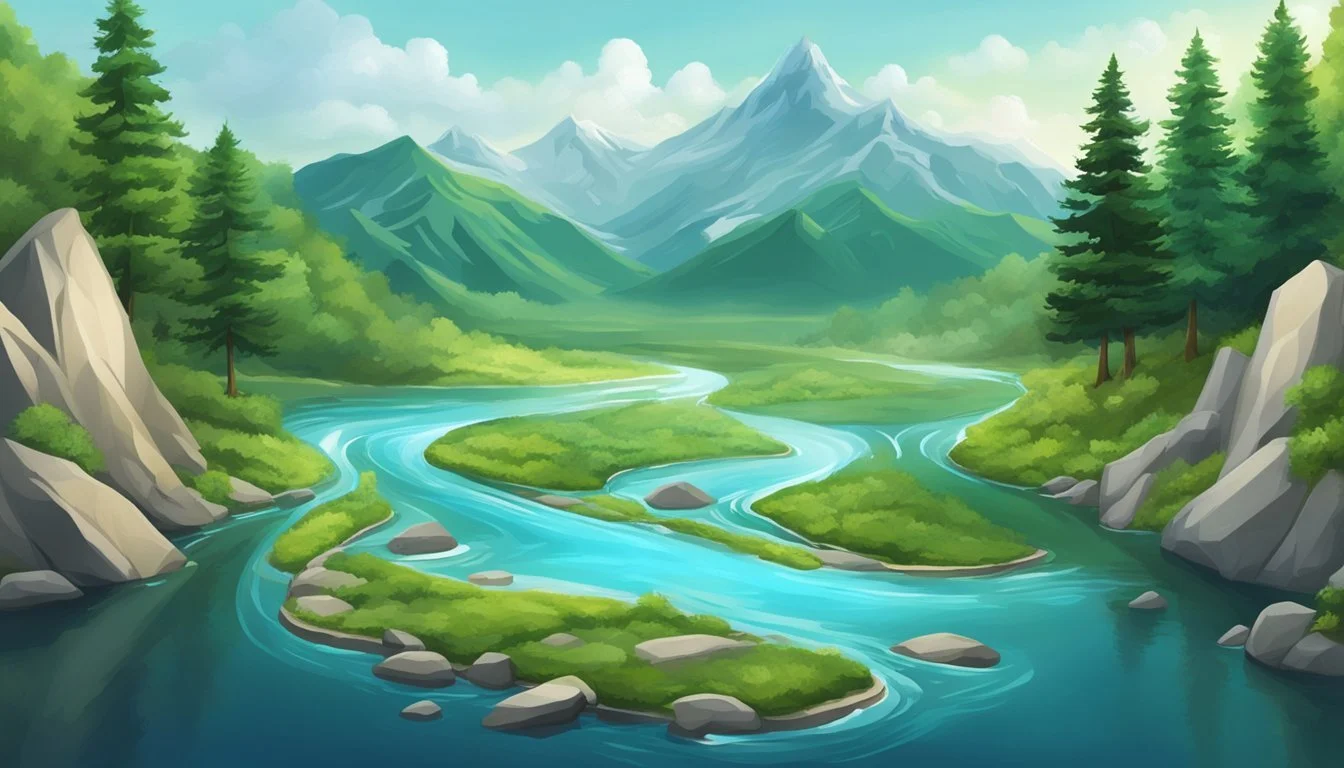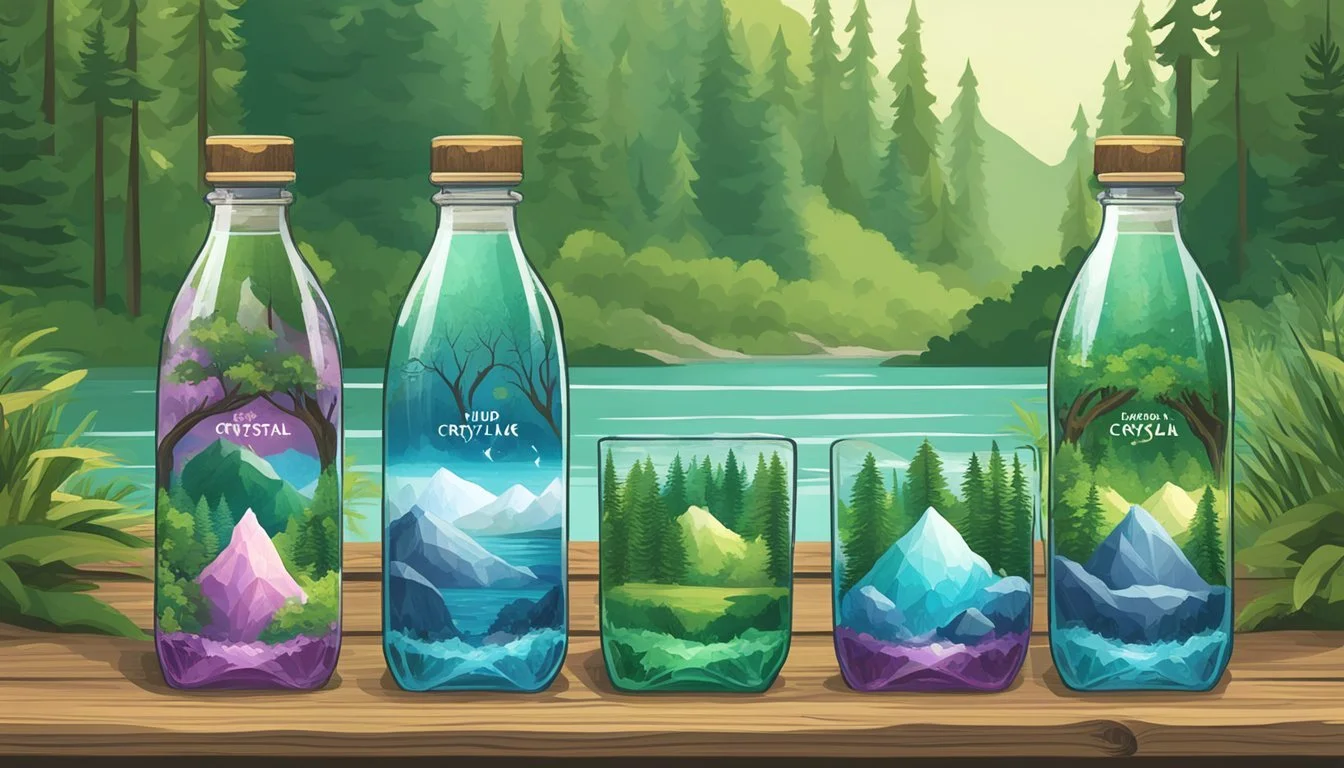Liquid Death vs. Crystal Lake
Analyzing the Superior Bottled Water
When it comes to choosing between Liquid Death and Crystal Lake bottled waters, the decision ultimately lies in what you value in your hydration experience. Liquid Death offers both sparkling and flat variations, and stands out with its edgy branding and aluminum packaging, which is more eco-friendly compared to plastic. For those who prioritize sustainability and a unique drinking experience, Liquid Death may be the better choice.
Crystal Lake, on the other hand, is a premium brand known for its pure taste and clean packaging. It might not have the same bold marketing as Liquid Death, but it provides a straightforward, dependable option for those who want quality bottled water without any added flair. Consumers looking for a classic, reliable drinking water might prefer Crystal Lake for its simplicity and effectiveness.
Both brands serve different niches within the bottled water market. Liquid Death draws in those who appreciate modern branding and environmental consciousness, while Crystal Lake appeals to traditionalists focused on purity and taste. Readers exploring these options will find value in understanding how their preferences align with what each brand offers.
Brand Overview
Liquid Death and Crystal Lake offer distinct approaches in the bottled water market, both vying for consumer attention in unique ways.
Liquid Death's Market Position
Liquid Death has quickly become a recognizable name in the bottled water industry. Founded by Mike Cessario, the brand gained attention with its edgy, punk-inspired branding. The name "Liquid Death" is intentionally provocative, aiming to reshape water's image to appeal to a younger demographic that might typically prefer energy drinks or alcohol.
The brand's marketing efforts thrive on social media platforms like Instagram and TikTok, where it leverages humor and irony. Liquid Death is available in major retailers such as Whole Foods, Amazon, and Target, as well as convenience stores like 7-11. Its product lineup includes both still and sparkling options, with creative names for their flavors, making it a standout choice for consumers interested in an alternative, rebellious water brand.
Crystal Lake's Brand Presence
Crystal Lake takes a more traditional approach with a focus on purity and sustainability. Known for its clean and crisp taste, Crystal Lake sources its water from natural springs and emphasizes eco-friendly practices. Their branding is serene and nature-oriented, appealing to consumers who prioritize environmental responsibility and health.
Crystal Lake's distribution network spans across various states, with availability in many natural and organic stores. Though it may not have the same viral presence on social media platforms, it maintains a loyal customer base through consistent quality and a strong commitment to green practices. Crystal Lake works with retailers like Whole Foods and other specialized natural food stores, making it a trusted name in the premium bottled water market.
Packaging and Environmental Impact
Packaging and the environmental implications are crucial when comparing Liquid Death and Crystal Lake bottled waters. Key aspects include the materials used and their recyclability.
Aluminum vs. Plastic
Liquid Death distinguishes itself by using aluminum cans for packaging, a choice that marks a significant shift from traditional plastic bottles.
Aluminum stands out because it is infinitely recyclable and requires less energy to produce than plastic. Plastic bottles, found in brands like Crystal Lake, are significantly less environmentally friendly due to their synthetic nature and the considerable energy required for their production.
Despite its benefits, aluminum is not without challenges. The extraction and processing of aluminum are energy-intensive and contribute to CO2 emissions. Yet, once produced, aluminum's continual recyclability gives it a clear advantage over plastic, which often ends up in landfills or oceans.
Recyclability and Sustainability
Recyclability plays a pivotal role in determining the environmental footprint of packaging materials. Liquid Death’s use of aluminum cans, which are almost entirely recyclable, offers a sustainable alternative to the plastic bottles used by Crystal Lake.
Plastic bottles are a significant source of waste because they are less frequently recycled and tend to break down into harmful microplastics. Moreover, as mentioned, the presence of nanoplastics in bottled water raises health concerns.
On the other hand, aluminum's high recyclability rate means it can be repurposed indefinitely, reducing the need for virgin materials. This aligns with the sustainability ethos of "death to plastic," advocating for reduced plastic production and use. While glass and boxed water offer other alternatives, aluminum emerges as a strong contender for environmentally friendly packaging.
Product Varieties
Liquid Death and Crystal Lake each offer a range of products meant to cater to different preferences for bottled water, including both still and sparkling options as well as various flavored variants.
Still and Sparkling Water Options
Liquid Death provides both still and sparkling water options. Their still water is known for its purity and comes in aluminum cans, promoting eco-friendliness. The sparkling water is similarly pure, with a crisp and refreshing taste, also packaged in aluminum to reduce plastic waste.
Crystal Lake offers still and sparkling water options as well. The still water comes in traditional plastic bottles and aims at delivering a smooth, clean taste. Crystal Lake's sparkling water is noted for its balanced carbonation, promising a light and refreshing experience.
Flavored Variants
Liquid Death has expanded its line to include several flavored waters. These include varieties like Mango Chainsaw, a mango and orange blend lightly sweetened with agave, and their iced tea options like the Armless Palmer, a mix of iced tea and lemonade. The flavors are designed to offer a unique and enjoyable twist on standard sparkling waters.
Crystal Lake also provides flavored water options, each aiming to deliver a refreshing taste without overpowering sweetness. Flavor options include classic choices like lemon and lime, enhancing their bottled waters with subtle yet distinct fruit notes.
Health and Composition
When comparing the health and composition of Liquid Death and Crystal Lake bottled waters, it's essential to examine aspects such as electrolyte content, pH levels, and the ingredients used in each product.
Electrolytes and pH Levels
Electrolytes like sodium, potassium, and magnesium are crucial for maintaining hydration and overall bodily function. Liquid Death's canned water contains a balance of these electrolytes, making it a good option for rehydration. The pH level of Liquid Death Mountain Water generally ranges from 7.4 to 8.1, aligning with the body's natural pH.
Crystal Lake bottled water, on the other hand, often boasts a similar or slightly higher pH level. Some versions of Crystal Lake water have added electrolytes for enhanced hydration benefits. The pH level typically falls between 7.5 and 8.5, which helps neutralize acidity in the body.
Ingredients Comparison
Both brands emphasize their water's purity and use minimal ingredients. Liquid Death offers both mountain and sparkling water options. The unflavored versions contain simply water and carbonation for the sparkling variant.
Crystal Lake water primarily focuses on being free from contaminants and chemicals. Its ingredients list is straightforward, usually just showcasing pure water sources. While Liquid Death's flavored varieties include natural flavorings and sweeteners, Crystal Lake often opts to maintain a natural, unflavored profile.
Comparing these components, both brands provide clean, minimally processed water, though Liquid Death's flavored options may include additional ingredients.
Taste Profile
Liquid Death offers both still and sparkling waters, as well as a variety of flavored options. Their mountain spring water is sourced from the Austrian Alps and is known for its refreshing taste. The still water is crisp and clean, with a neutral flavor that enhances its refreshing qualities.
In contrast, Crystal Lake provides a more subtle taste profile. This water is also crisp, but tends to have a slightly softer mouthfeel.
Flavored Options
Liquid Death offers several intriguing flavors:
Mango Chainsaw: Combines mango and orange flavors, lightly sweetened with agave. It's vibrant and juicy.
Severed Lime: Features a bold lime flavor with a slight citrus tang, balanced with agave sweetener.
Crystal Lake focuses on simplicity and typically doesn't offer flavored waters, concentrating instead on the purity and quality of its natural spring water.
Packaging Impact
Liquid Death’s water in a can maintains a distinct freshness often attributed to the use of aluminum cans. The packaging can slightly influence the taste, offering a cooler and often fresher experience compared to some plastic bottles.
Crystal Lake uses traditional plastic bottles, which may occasionally lead to a slight plastic taste if stored for extended periods.
Overall, both brands offer a refreshing experience, but the added flavors in Liquid Death's lineup provide more varied taste profiles for those seeking something beyond plain water.
Consumer Experience
Consumers have provided varied feedback on both Liquid Death and Crystal Lake, touching on aspects like hydration benefits and marketing influence. This section explores these perspectives more closely.
Hydration and Health Benefits
Consumers often prioritize hydration and health when choosing bottled water. Liquid Death's sparkling water offers a distinct bite, attributed to its natural carbonation. Packed in aluminum, Liquid Death claims to have environmental benefits over plastic bottles.
Users highlight the crisp, refreshing taste and the absence of additives, complementing a healthy lifestyle. Crystal Lake, on the other hand, is traditionally packaged in plastic but boasts a clean, pure taste free from any metallic or plastic aftertaste. Both brands aim to hydrate effectively, though customer preferences vary based on taste and packaging materials.
Marketing and Customer Perception
Marketing strategies significantly impact customer perception. Liquid Death's aggressive slogan "Murder Your Thirst" and edgy branding resonate with a younger audience. Their marketing campaigns, featuring figures like Travis Barker, leverage social media for widespread engagement.
Mike Cessario, the founder, has effectively utilized unconventional advertising to make Liquid Death a popular, trendy choice. In contrast, Crystal Lake adopts a more traditional marketing approach, emphasizing purity and reliability. While respected for its quality, it lacks the viral appeal of Liquid Death.
These divergent marketing strategies reflect in customer demographics and brand loyalty, shaping how each brand is perceived in the market.
Distribution and Availability
Liquid Death and Crystal Lake have broad distribution channels that make them accessible to many consumers.
Liquid Death can be found in popular grocery stores such as Whole Foods, Target, and Sprouts Farmers Market. It’s also available at liquor stores, bars, and through event partnerships with Live Nation at festivals. For those preferring online shopping, Liquid Death is sold on Amazon and on its own website.
Crystal Lake, on the other hand, is primarily distributed through local and regional stores. While it may not have the national retail presence of Liquid Death, it can often be found at independent grocery stores and health food shops.
Availability overview:
Liquid Death: Whole Foods, Target, Sprouts, liquor stores, bars, Live Nation events, Amazon
Crystal Lake: Local and regional stores, health food shops
Both brands have focused on retail and online availability, ensuring consumers can conveniently purchase their products. Liquid Death’s partnerships with festivals and bars increase its market presence and visibility. Crystal Lake benefits from strong support in local markets.
In summary, Liquid Death appears to have a broader and more varied distribution network compared to Crystal Lake, which focuses on a more regional approach. This availability may impact consumer choice depending on geographic location and shopping preferences.
Comparative Analysis
Liquid Death and Crystal Lake are two premium bottled water brands competing in a crowded market. They each have unique selling points that cater to different consumer needs and preferences.
Market Trends and Competition
The bottled water market is vast, with major players like Coca-Cola, Fiji, Flow, Topo Chico, and La Croix taking significant shares. Liquid Death distinguishes itself through its edgy branding and unique packaging, which uses aluminum cans that contain 70% recycled material. This appeals to environmentally conscious consumers.
Crystal Lake, on the other hand, emphasizes purity, often sourcing its water from protected natural springs. It positions itself as a high-quality choice in the premium segment. Both brands are capitalizing on the growing consumer preference for healthier beverage options, pushing against traditional sugary drinks.
Cost Effectiveness
When it comes to cost, both brands are positioned in the premium price range. Liquid Death is priced around $1.62 to $1.69 per can, available at retailers like Target and Whole Foods. This pricing is competitive given its premium features and eco-friendly packaging.
Crystal Lake's pricing varies but generally aligns with other high-end bottled water brands. While it may not be the cheapest option, the perceived value from its source and purity justifies its cost to many consumers. Comparing to brands like Fiji and Flow, Crystal Lake often provides a similar or slightly higher price point but competes strongly on perceived quality.
Environmental and Social Initiatives
Liquid Death and Crystal Lake both emphasize their commitment to sustainability and community engagement through several specific actions.
Charity and Community Support
Liquid Death actively supports various charitable initiatives. A portion of their profits goes to organizations dedicated to environmental protection. They partner with nonprofits to clean up plastic waste from oceans and waterways, contributing significantly to conservation efforts.
Crystal Lake focuses on health and wellness in communities. They donate bottled water during emergencies and natural disasters, ensuring access to clean water. Additionally, they sponsor local health programs and fitness events, promoting healthy living habits.
Both brands integrate social responsibility into their business models, demonstrating a strong commitment to both environmental sustainability and community well-being.
Conclusions and Recommendations
Liquid Death and Crystal Lake both offer refreshing hydration options, but key differences can influence your choice.
Environmental Impact:
Liquid Death uses aluminum cans, which are recyclable and reduce plastic waste.
Crystal Lake often uses plastic bottles, which contribute to environmental pollution.
Health Aspects:
Both brands provide clean, safe drinking options.
Liquid Death offers still and sparkling options that are calorie-free and sugar-free.
Crystal Lake focuses on still water, consistently marked safe and free from contaminants.
Taste and Refreshment:
Liquid Death Sparkling Water is praised for its refreshing taste and fizziness.
Crystal Lake is often noted for its smooth and clean flavor, appealing to those preferring still water.
Packaging and Price:
Liquid Death is typically pricier, reflecting its premium brand and eco-friendly packaging.
Crystal Lake is more budget-friendly, readily available at various retailers.
Recommendation:
Choose Liquid Death if you prioritize sustainability and enjoy sparkling water.
Opt for Crystal Lake if you want a reliable, cost-effective still water option.
Consider both brands' strengths to make an informed decision based on personal preferences and values.
More About Liquid Death
Aqua Carpatica vs Liquid Death: Which Bottled Water is Better?
Core Hydration vs Liquid Death: Which Bottled Water is Better?
Hawaii Volcanic vs Liquid Death: Which Bottled Water is Better?
Hawaiian Springs vs Liquid Death: Which Bottled Water is Better?
Ice Mountain vs Liquid Death: Which Bottled Water is Better?
Icelandic Glacial vs Liquid Death: Which Bottled Water is Better?
Liquid Death vs Cascade Mountain: Which Bottled Water is Better?
Liquid Death vs Crystal Geyser: Which Bottled Water is Better?
Liquid Death vs Essence pH10: Which Bottled Water is Better?
Liquid Death vs Kirkland Signature: Which Bottled Water is Better?
Liquid Death vs Proud Source: Which Bottled Water is Better?
Liquid Death vs Richard's Rainwater: Which Bottled Water is Better?
Liquid Death vs Simple Truth: Which Bottled Water is Better?
Liquid Death vs Talking Rain AQA: Which Bottled Water is Better?
Liquid Death vs Whole Foods 365: Which Bottled Water is Better?
Liquid Death vs Whole Foods Italian Still Mineral water: Which Bottled Water is Better?
Mountain Valley Spring Water vs Liquid Death: Which Bottled Water is Better?
Nestle Pure Life vs Liquid Death: Which Bottled Water is Better?
Poland Spring vs Liquid Death: Which Bottled Water is Better?
Purely Sedona vs Liquid Death: Which Bottled Water is Better?
San Pellegrino vs Liquid Death: Which Bottled Water is Better?
Solan de Cabras vs Liquid Death: Which Bottled Water is Better?
More About Crystal Lake
Aqua Carpatica vs Crystal Lake: Which Bottled Water is Better?
Cascade Mountain vs Crystal Lake: Which Bottled Water is Better?
Core Hydration vs Crystal Lake: Which Bottled Water is Better?
Crystal Geyser vs Crystal Lake: Which Bottled Water is Better?
Crystal Lake vs Essence pH10: Which Bottled Water is Better?
Crystal Lake vs Proud Source: Which Bottled Water is Better?
Hawaii Volcanic vs Crystal Lake: Which Bottled Water is Better?
Hawaiian Springs vs Crystal Lake: Which Bottled Water is Better?
Ice Mountain vs Crystal Lake: Which Bottled Water is Better?
Icelandic Glacial vs Crystal Lake: Which Bottled Water is Better?
Kirkland Signature vs Crystal Lake: Which Bottled Water is Better?
Mountain Valley Spring Water vs Crystal Lake: Which Bottled Water is Better?
Nestle Pure Life vs Crystal Lake: Which Bottled Water is Better?
Poland Spring vs Crystal Lake: Which Bottled Water is Better?
Purely Sedona vs Crystal Lake: Which Bottled Water is Better?
Richard's Rainwater vs Crystal Lake: Which Bottled Water is Better?
San Pellegrino vs Crystal Lake: Which Bottled Water is Better?
Simple Truth vs Crystal Lake: Which Bottled Water is Better?
Solan de Cabras vs Crystal Lake: Which Bottled Water is Better?
Talking Rain AQA vs Crystal Lake: Which Bottled Water is Better?
Whole Foods 365 vs Crystal Lake: Which Bottled Water is Better?
Whole Foods Italian Still Mineral water vs Crystal Lake: Which Bottled Water is Better?










